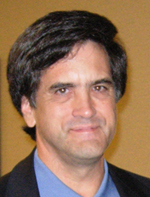 |
Keith Mueller, Ph.D. |
But, the aging of many of the state’s health professionals will pose a problem in years to come if a solution isn’t found.
“It’s sort of good news, bad news,” said Keith Mueller, Ph.D., director of the Nebraska Center for Rural Health Research and interim dean of the UNMC College of Public Health. “In Nebraska, we look fine overall, and we fared better than most states. But this doesn’t mean we can sit back and rest on our laurels. We have looming aging and changing lifestyle issues. If we act now, we can successfully deal with these issues.”
The report, “A critical match: Nebraska’s Health Workforce Planning Project Interim Report,” is a two-year health workforce planning project that began in September 2007 and will be completed in phases.
The report provides a snapshot of the current supply, composition and geographical distribution of health professionals in the state of Nebraska. It also compared the number in Nebraska with national averages.
The report was distributed to key stakeholders in Nebraska, including professional associations, trade associations, public health departments and health care providers.
The goal of the report, which will be complete next year, Dr. Mueller said, is to serve as a guide for state policy makers to develop a comprehensive plan to predict the need for health care professionals, stay abreast of innovations in training and develop programs to meet future needs for professionals who practice effectively in health care teams.
Key findings include:
- More than one-third of all physicians in Nebraska are older than 50 years old and are likely to retire in the next 10 to 15 years;
- Women account for only 26 percent of Nebraska’s physician workforce;
- More than one-third of dentists and psychiatrists are older than 55;
- More than 20 percent of actively practicing registered pharmacists in Nebraska are older than 55 and likely to retire in the next 10 years; and
- Women make up half of the pharmacist workforce.
The $100,000 project, thought to be the most comprehensive look yet at Nebraska’s health care workforce, was funded by the Larson Medical Research Fund through the University of Nebraska Foundation. It includes information on physicians, non-physician clinicians, dental professionals, pharmacists, mental health professionals, allied health professionals, auxiliary health professionals, nurses and public health professionals.
Besides aging issues, Preethy Nayar, Ph.D., contributing author and UNMC College of Public Health assistant professor, said addressing generational lifestyle changes in the health care workforce also is becoming a major concern.
“We used to see some physicians working until they were 80 years old, working long hours and being on call 24/7. But that’s changing,” she said. “The growing trend is working less hours than previous generations and retiring earlier.”
Dr. Mueller said one of the strengths of the study was that researchers were able to identify a better way of analyzing health profession shortage areas.
“Even before we talk about shortages in regions, what we’ve found is a way to identify service area shortages, which is how you can identify what the needs are,” Dr. Mueller said. “Even if it looks OK in a region, there may be some spots where people have less than optimal access.”
|
|
This includes a variety of UNMC programs designed to recruit and educate rural health practitioners with the idea they will ultimately practice in rural areas. These programs have paid large dividends, Dr. Mueller said.
He cited programs such as the Rural Health Education Network, a partnership between UNMC and Nebraska communities to meet the health profession needs of the greater Nebraska; the Rural Health Opportunities Program, a partnership between Chadron State College and Wayne State College that allows early acceptance into medical and dental school when qualified students begin undergraduate studies; and a requirement that UNMC students participate in rural rotations, during which students receive health profession training under the supervision of volunteer preceptors in communities.
“What’s impressive is that the programs now have permeated throughout all of UNMC’s educational programs,” Dr. Mueller said. “For example, the College of Nursing’s presence across the state has made a big difference in getting more nurses to practice in the areas in which they’re educated.”
He also credited the state for its student loan forgiveness program, which has drawn many to practice in rural areas.
“Nebraska was one of about five states that started these initiatives,” Dr. Mueller said, “and we got results.”
UNMC contracts with the state of Nebraska on health policy analysis projects.
Data for the report came from a variety of sources, including the Health Professions Tracking Center, part of the UNMC College of Public Health; the Nebraska Department of Health and Human Services’ Licensure and Regulation Unit; the Nebraska Center for Nursing; and state and local public health departments.
The final report will be released in September 2009 and will project the future health workforce needs for Nebraska and include a strategic plan to address needs.
Other contributing authors of the report were UNMC College of Public Health faculty and staff Michael Shambaugh-Miller, Ph.D., Liyan Xu, Nicole Vanosdel, and Kelly Shaw-Sutherland.
Click here to view the entire report.